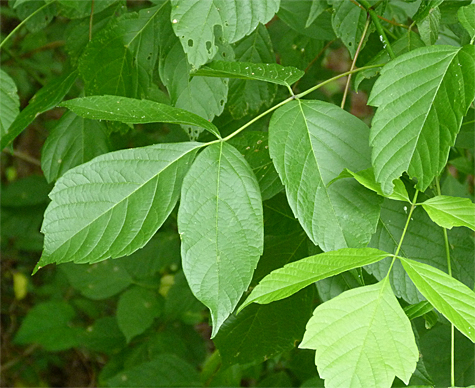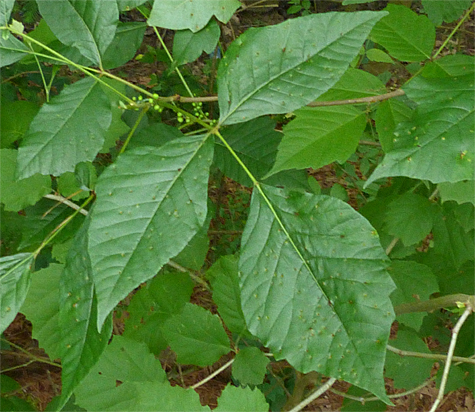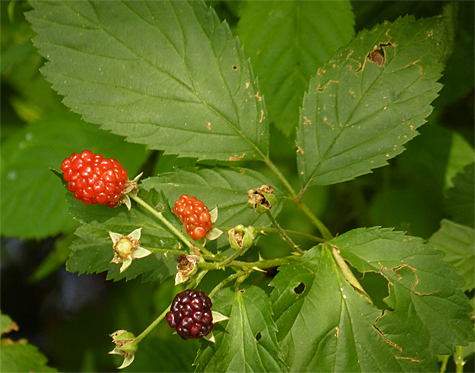Knowing the difference between the leaves in the accompanying photos can save you days of misery. But before I tell you what they are, have a look and see if you can identify them yourself.


Had a good look?
The photos were taken from the boardwalk leading into the Wetlands. The two sets of leaves were within two feet of each other just off the elevated portion of the boardwalk, about 12 feet from the ground. You can easily reach out and touch either.
The leaves in photo #1 belong to a maple tree, Boxelder (Acer negundo), or as it’s sometimes called, Ash-leaf Maple. The leaves look nothing like the other maples in our area but resemble an ash in that they are compound leaves, not simple leaves. If you’ve noticed, there are five leaflets on each leaf stalk.
Boxelders are short-lived trees and don’t typically achieve great heights. The twigs and young branches are green. The wood is soft and has few uses although hobbyist and woodworkers use the wood for bowls and other small pieces.
Boxelder does not, as far as I know, affect your health in any way if touched. However, according to The Wood Database, “Boxelders, along with other maples in the Acer genus have been reported to cause skin irritation, runny nose, and asthma-like respiratory effects.” Those effects are from breathing in the dust created by working with the wood, that is, cutting, sawing, and sanding.
The leaves in photo #2 belong to a vine, Poison Ivy (PI). Although many birds eat the berries, I know of no person that does so, or even purposely touches any part of the plant without paying a heavy toll (there is one exception, the late Euell Gibbons who used to eat the stuff). The price for handling the plant? at least a week of itchy, scratchy, blistery skin, if you’re lucky. Even rubbing up against the vine in winter when the leaves have fallen may result in undesirable discomfort.
Some people claim immunity to the plant, a claim I once made myself, until I broke out in a thick, blistery rash from coming in contact with it (I fell asleep in a stand of PI). I don’t doubt there are folks who are less sensitive to PI. But, I’ve also known people who can’t walk past the plant without breaking out in a rash. Most of us are in the middle somewhere, touch the plant, you get a rash.
The similarities of the two types of leaves are obvious, but the differences are there too. As I mentioned, boxelder has compound leaves with five leaflets, PI, three. PI’s leaves are alternate whereas boxelder’s are opposite. Poison Ivy has berries (visible in the photo). At no time does boxelder produce berries. And, check the source of the leaves. Are the leaves emanating from a vine that’s growing up the trunk of a tree. If so, don’t touch, that’s PI.
Poison Ivy can grow as a vine, take the form of a small shrub, or grow up a tree trunk and appear as though it’s part of the tree itself. The leaves are sometimes shiny, sometimes not, sometimes deep, forest green and sometimes green apple green. The shape of the leaf varies at times but most often the base of the leaflets are smooth with the distal half at least partially toothed.
There are other plants with three leaflets per leaf, blackberry for one. Blackberry leaves are also alternate like the leaves of Poison Ivy (the leaves are not opposite one another on the branches or stalks from which they grow). Unlike PI, blackberry leaves are toothed throughout, the entire margin of the leaf is toothed.

We have many examples of these three plants here at the Museum. If you’re curious to see either and don’t know where to look, run me down and I’ll point them out to you.
Have fun, and be careful what you touch!
Don’t forget Virginia Creeper! I’m not sure if we have any on grounds.
Your right, and yes, we have plenty of Virginia Creeper here at the Museum.
Thanks,